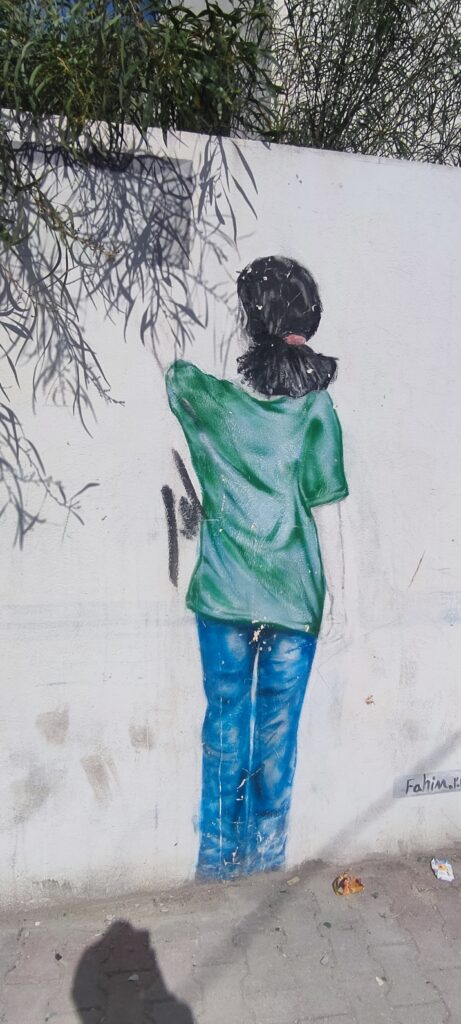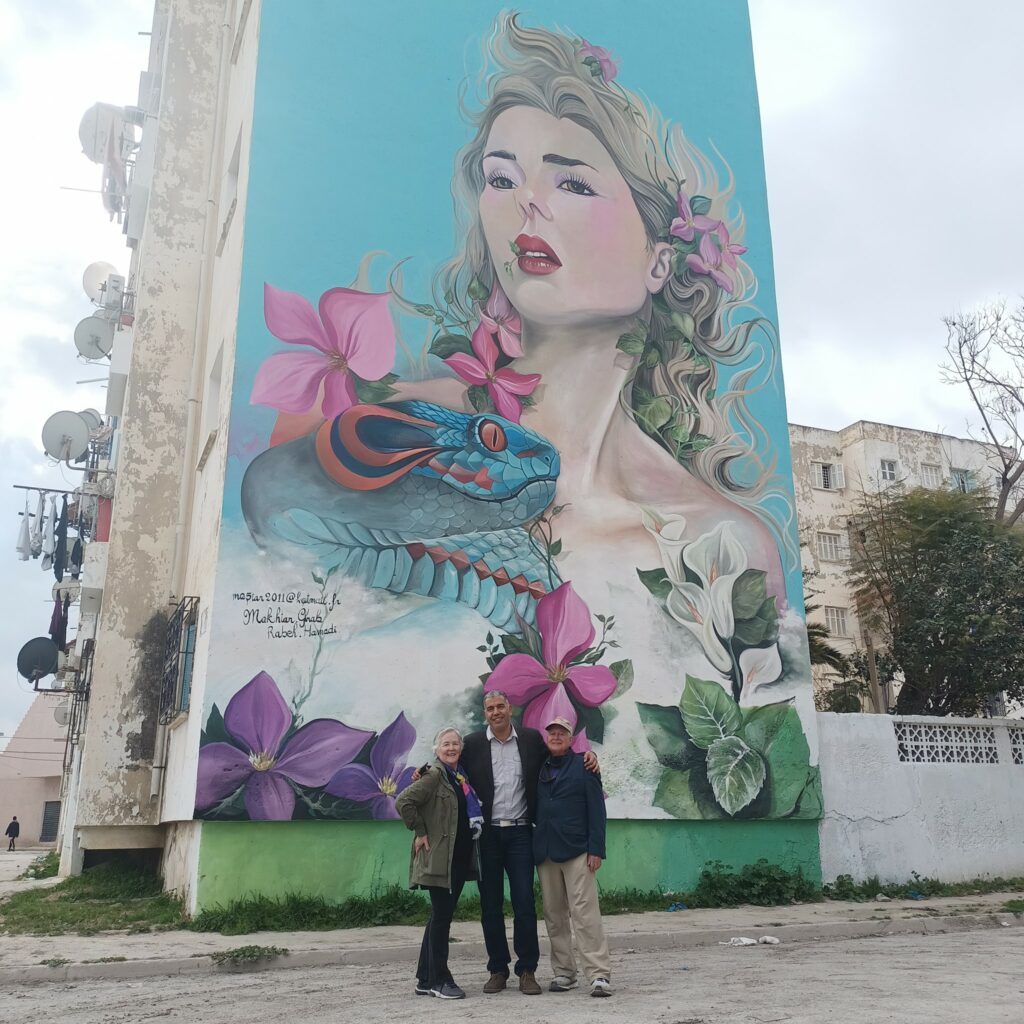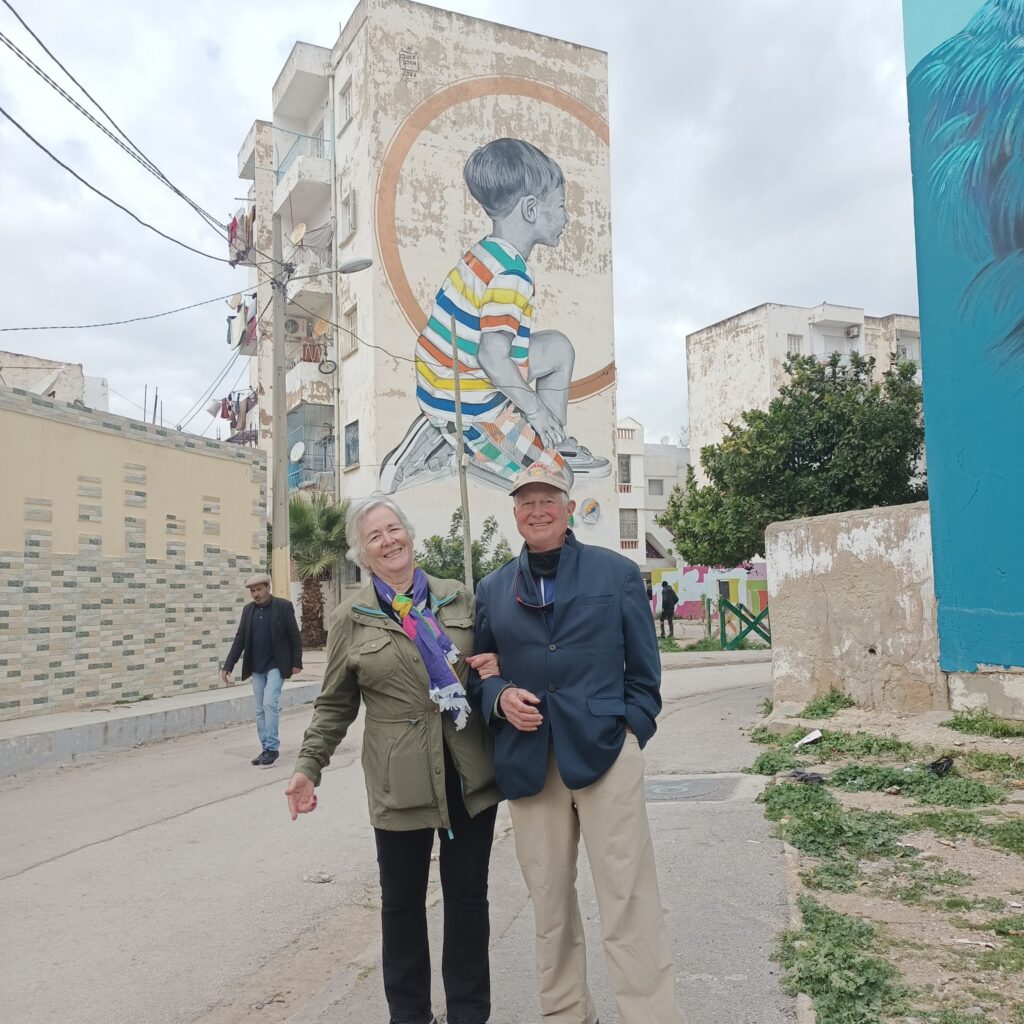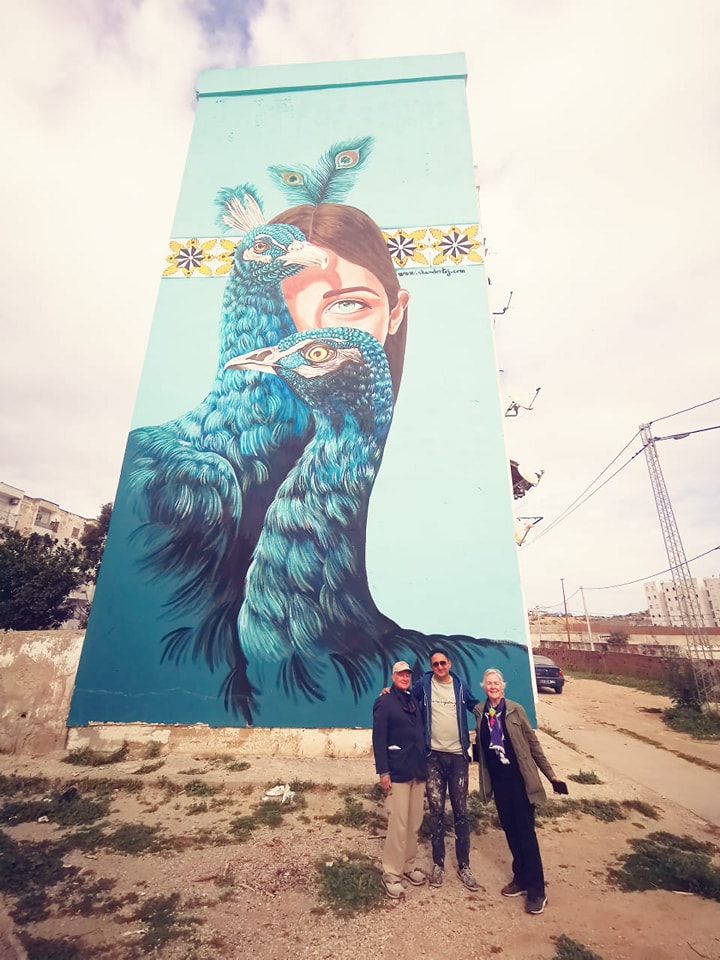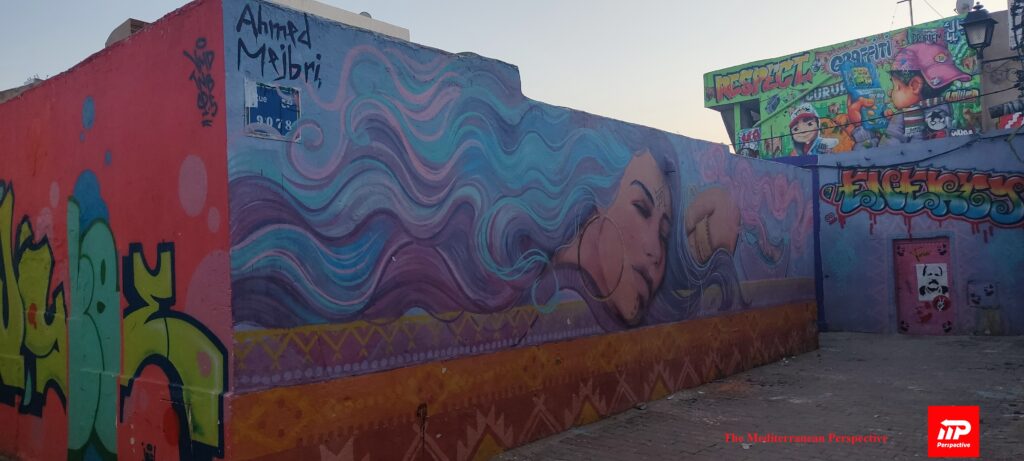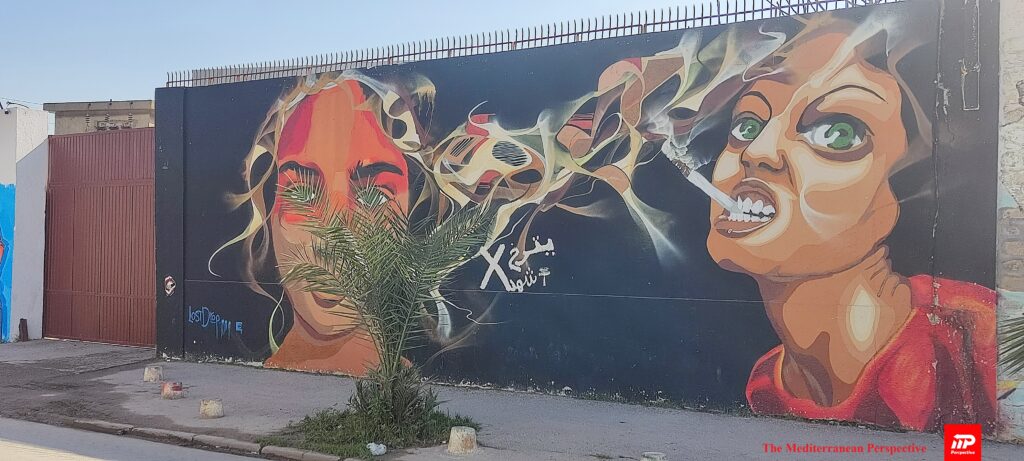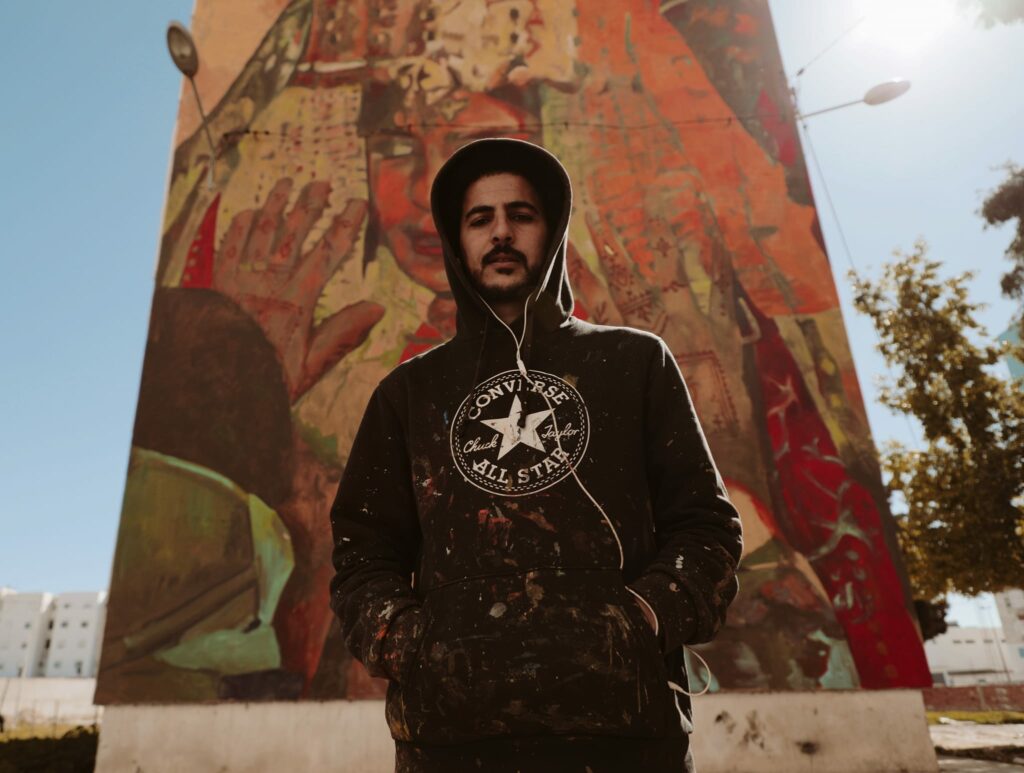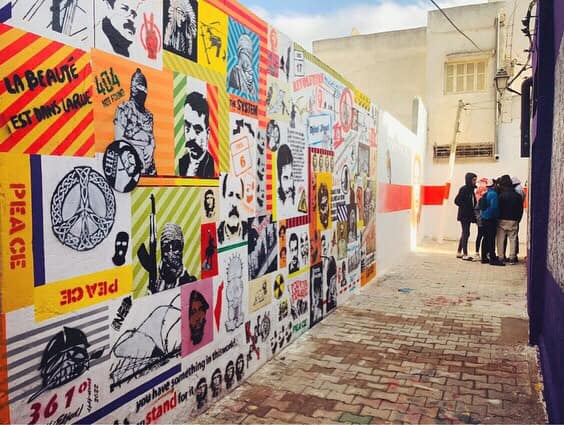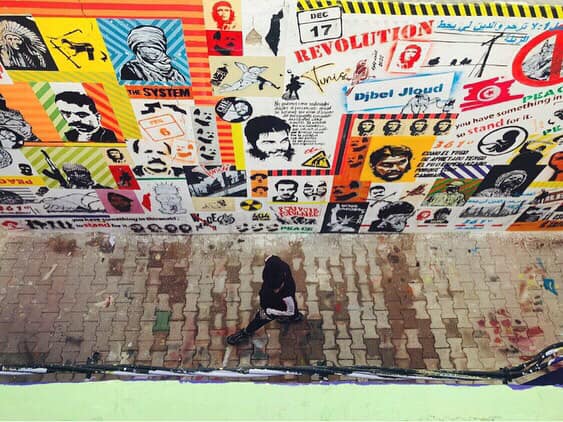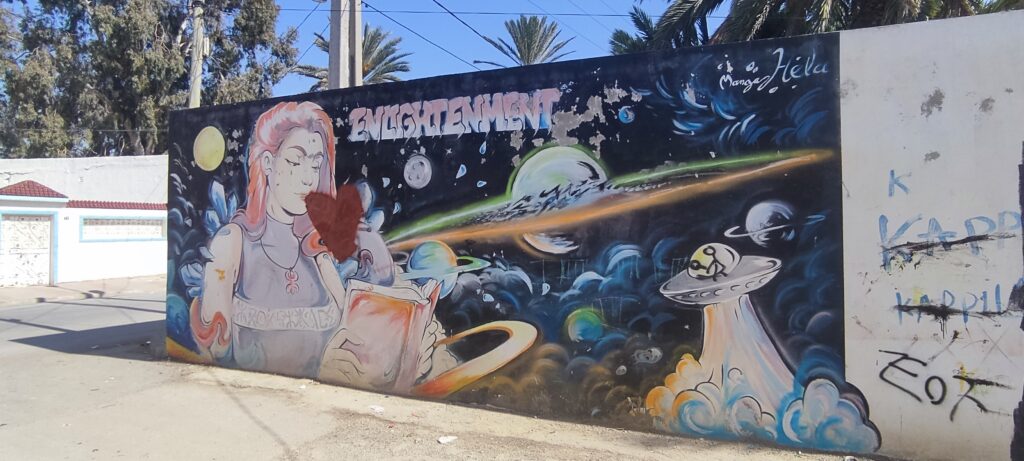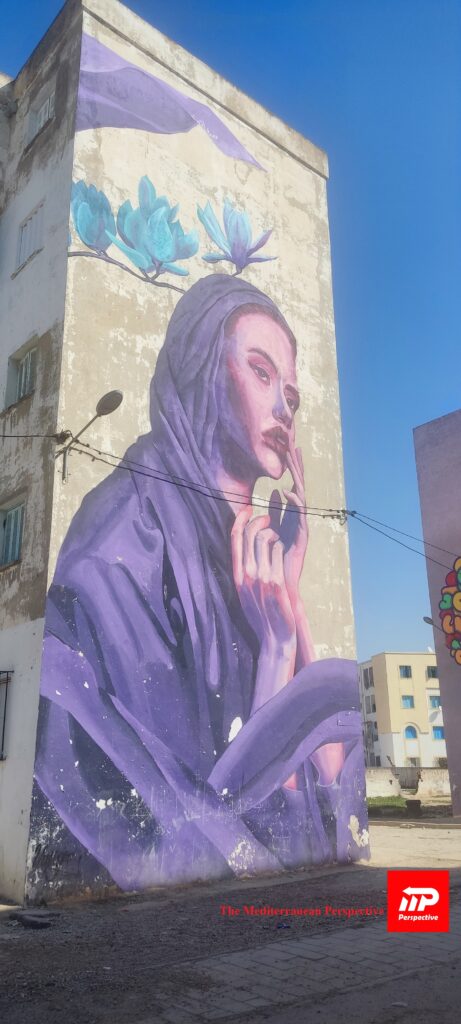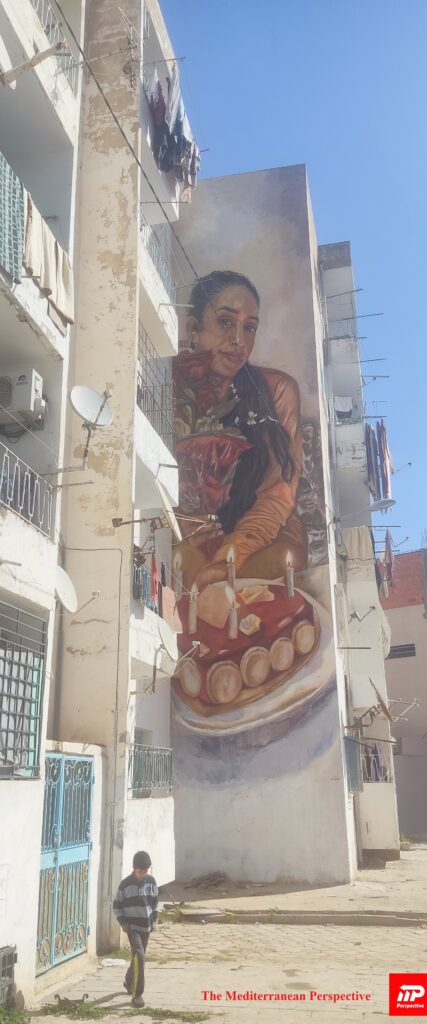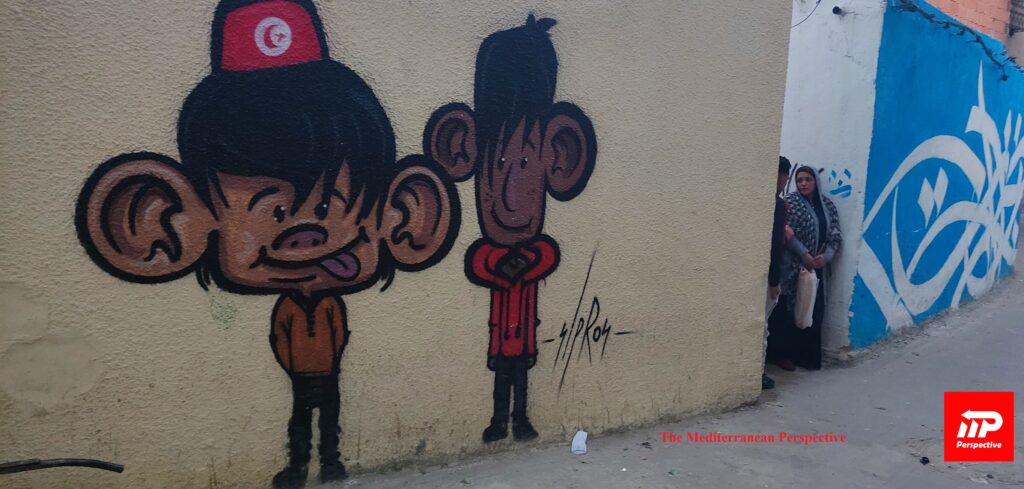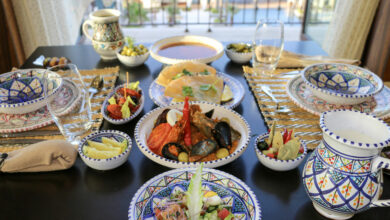Poor neighbourhood in Tunis turned into a work of Art: album

Jbal Jloud, 3 kilometres south of downtown Tunis, is one of those many neighbourhoods left behind in the peripheries of city centres by modernity although they host modernity’s industrial machine and nourish it. An arid neighbourhood that gave up to monotony a long time ago, Jbal Jloud had nothing to catch attention until it started hosting the Chokri Belaid International Forum for Arts 6 years ago. Since then, the buildings acquired new hues and the neighbourhood a new spirit, breathed into it by graffiti artists.
The divide between this small not very quiet town and the city centre is like the one between the North and the South of the planet, a gap recited in a mantra-like manner by intellectuals and people of great minds to show their opposition to inequality. English language media reports on Tunisia tend to reduce universal issues like poverty, political instability, and crime into local phenomena, but Jbal Jloud as I see it, is a ghetto, a neighbourhood you can mistakenly venture into while walking around many other metropolitan cities around the world.
It is one of those neighbourhoods you can pass by as soon as you leave a metropolitan city heading towards another without much in it to catch your attention if you happen to be familiar with the fact that the poor peripheries are a side-effect of the hectic centre.
In this neighbourhood, progress is slow, the population is working class, and connection to the outside world is only professional. The day begins with workers and students waiting in crowded and dark bus stations in the early morning and ends with the healthy and young among them hopping off these buses before the elderly can make it out, in equally dark, unlit bus stations in the early evening.
Other than the exchange of the money of these workers for goods imported into the neighbourhood’s local daily market, Jbal Jloud does not have much to do with the outside world, especially on Sundays and during the holidays as these working class people cannot afford to make it of their confinement in this arid, dull place that has little fun to offer.
Until 2013, when Chokri Belaid, one of Tunisia’s key Leftist opposition leaders and native of Jbal Jloud was assassinated as he was leaving his house in the wealthy neighbourhood of El Menzeh 6, Jbal Jloud was unknown to the general public.
The coverage of the assassination and the funerals which were held in his parents’ house in Jbal Jloud, brought the small poor town into light.
The Chorkri Belaid International Forum for Arts, founded in memory of Tunisia’s outspoken politician, ties the name of Belaid to Jbal Jloud, which became home to an annual international festival for graffiti. During the forum, graffiti artists from Tunisia, Europe, and the American continent would meet to advocate non-violence through art.
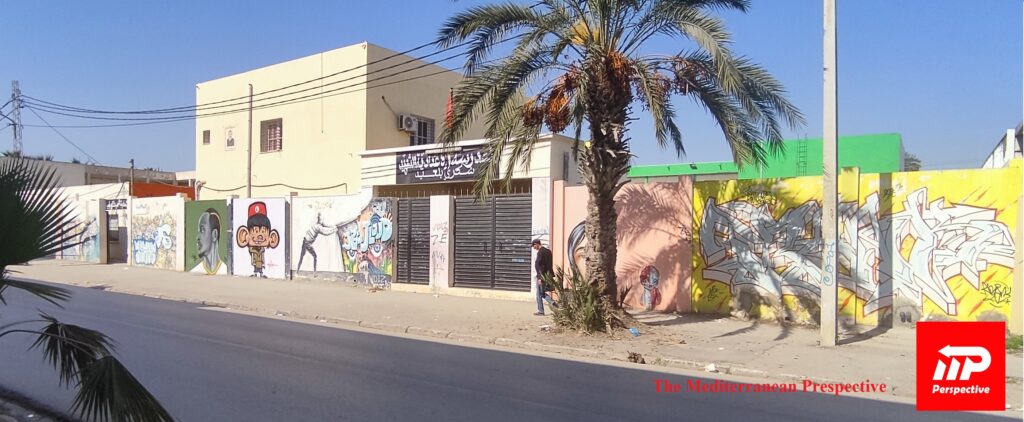
The fifth edition of this forum celebrated last year was under the theme “Tunisia, one thousand roses in one thousand hues”- a theme through which the organizers wanted to struggle against extremism, violence, and fanaticism, according to Abdelmajid Belaid, honorary president of the forum and brother of Chokri Belaid.
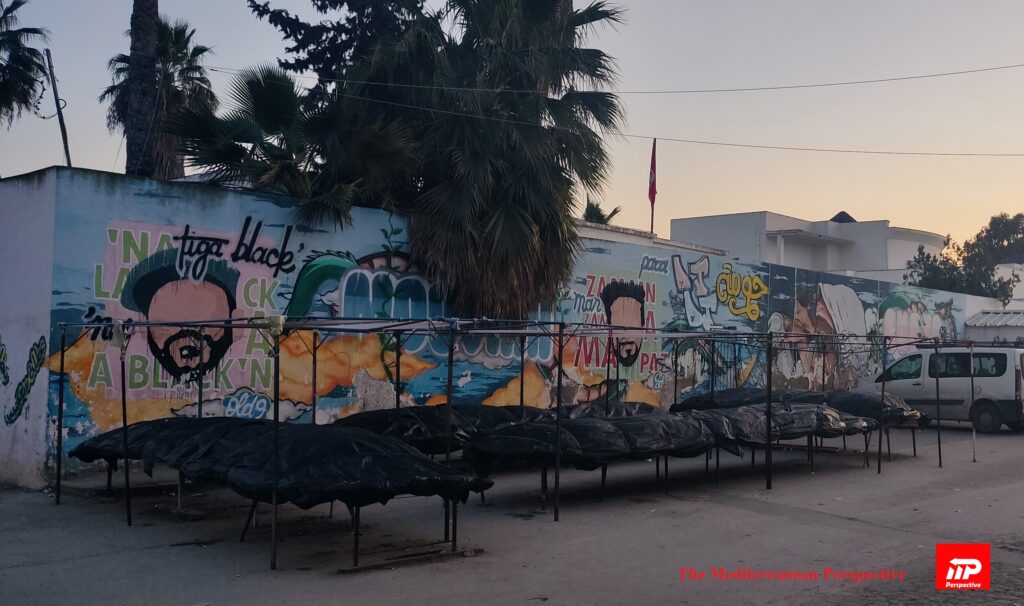
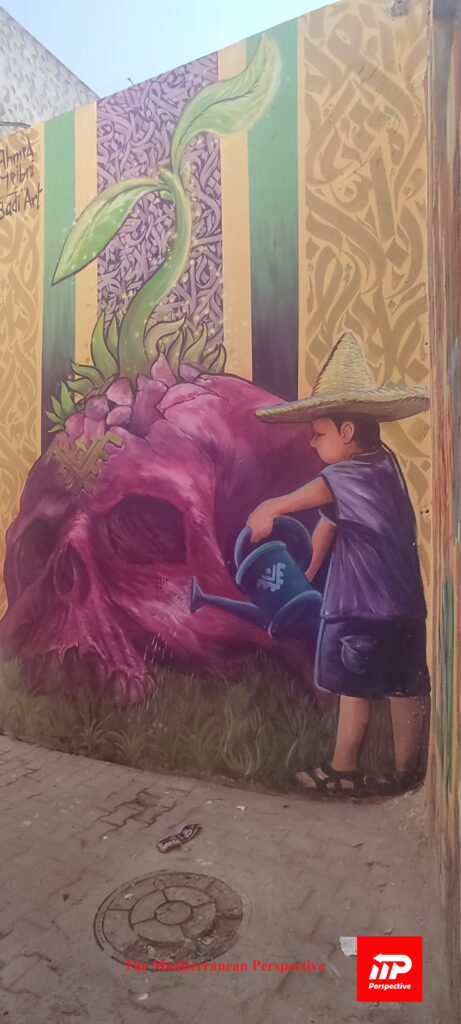
This year’s edition of the forum, which was under the theme “we survive through art and culture,” witnessed the participation of artists from 13 nationalities. By 2023, many of the alleys, streets, and houses took a new shape. The transformation could not have been possible without the consent of many people to have their houses painted.
